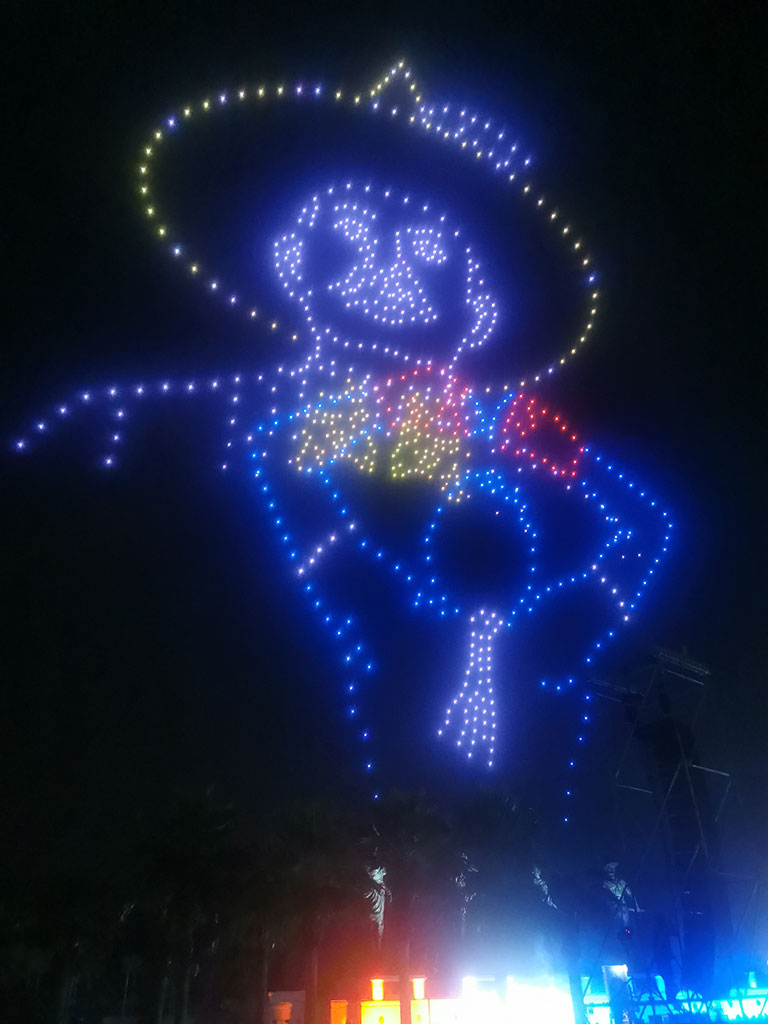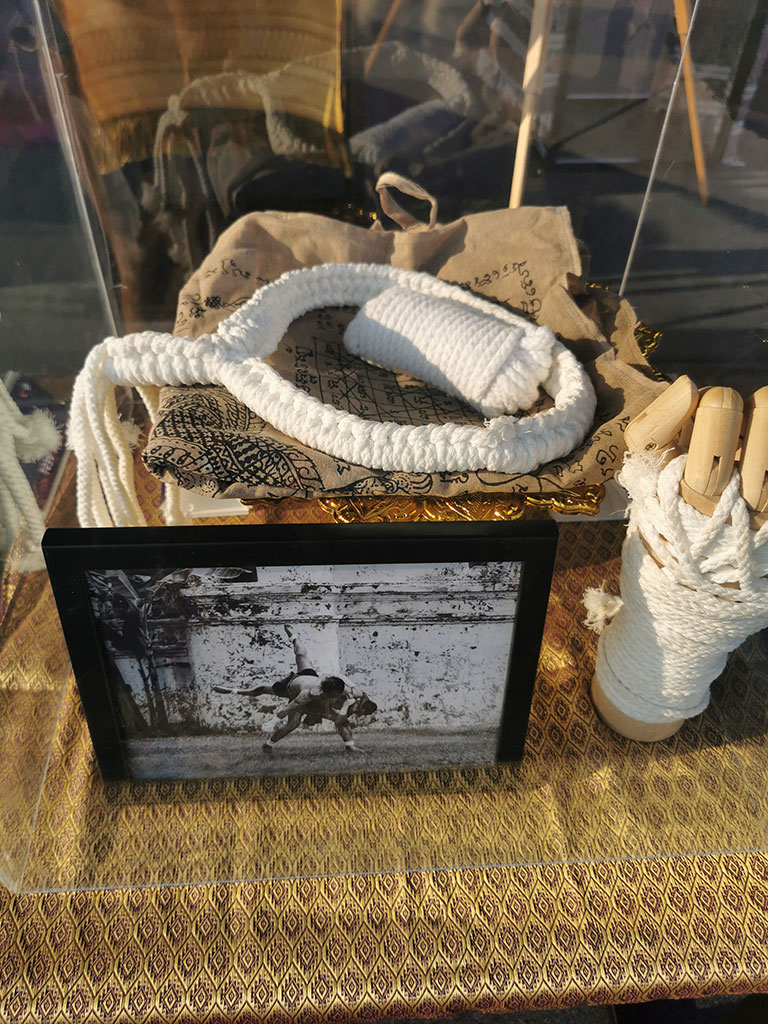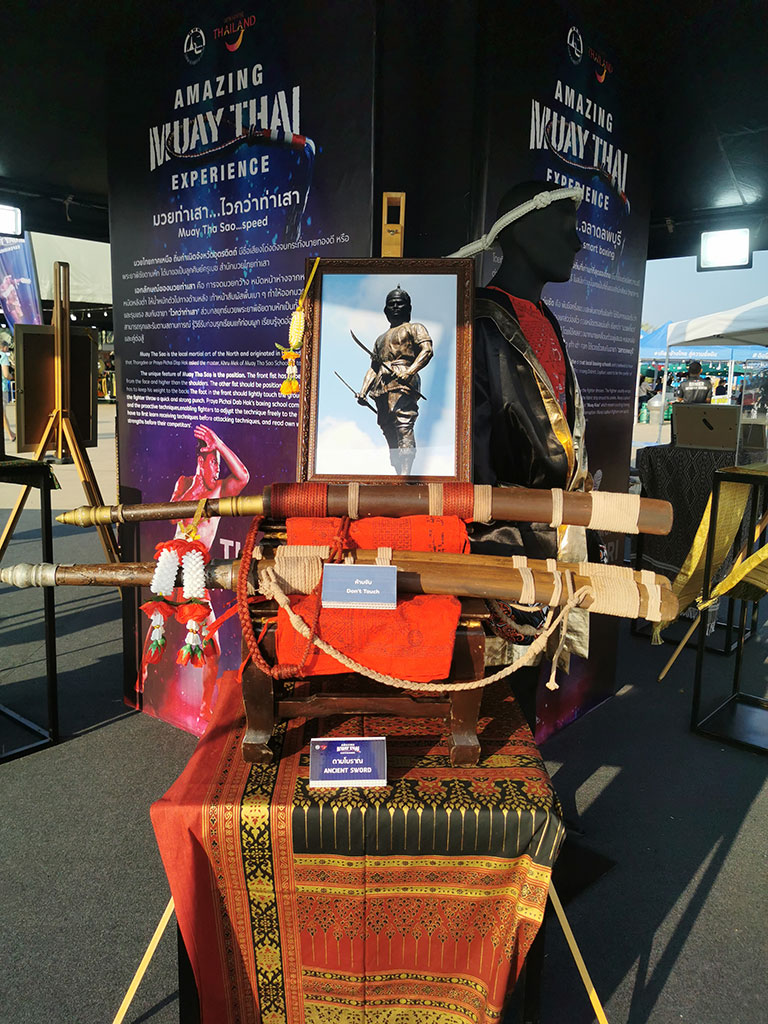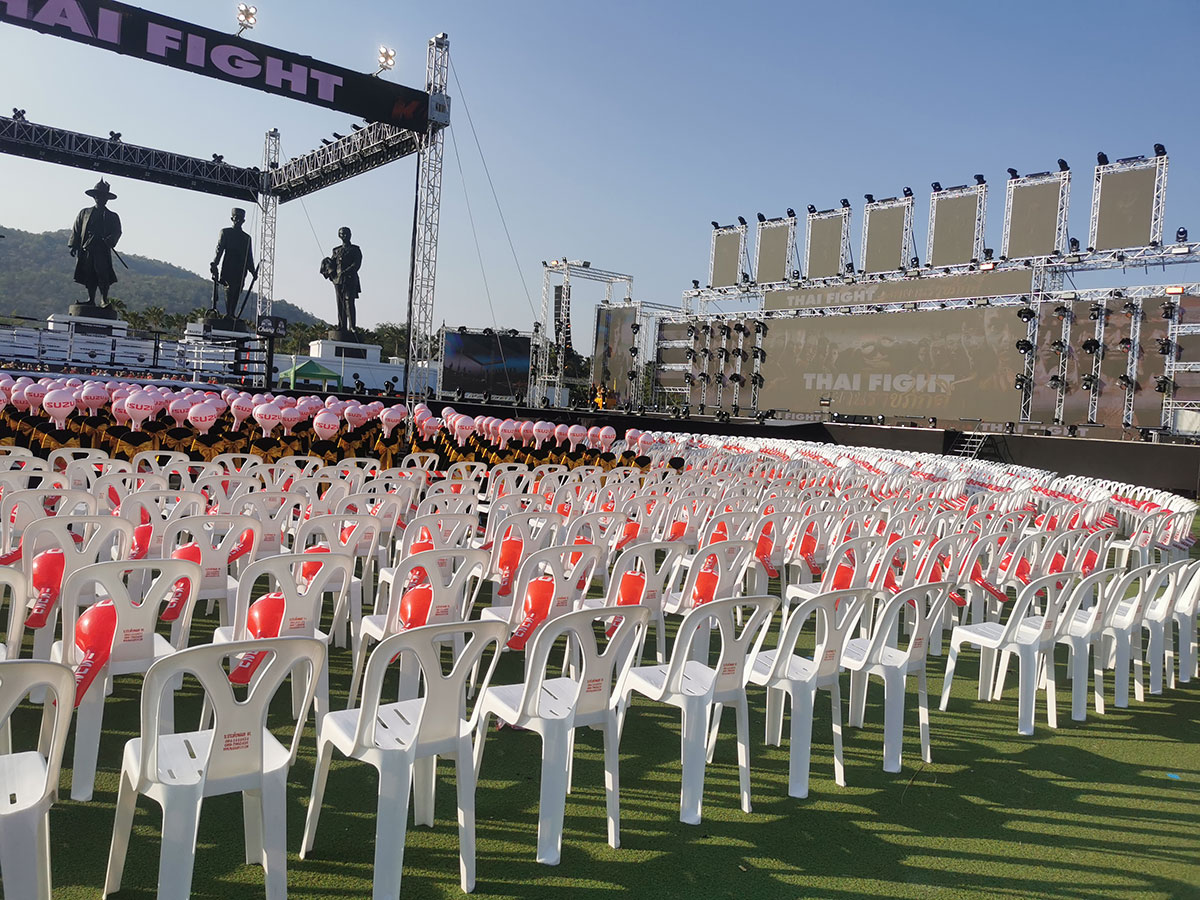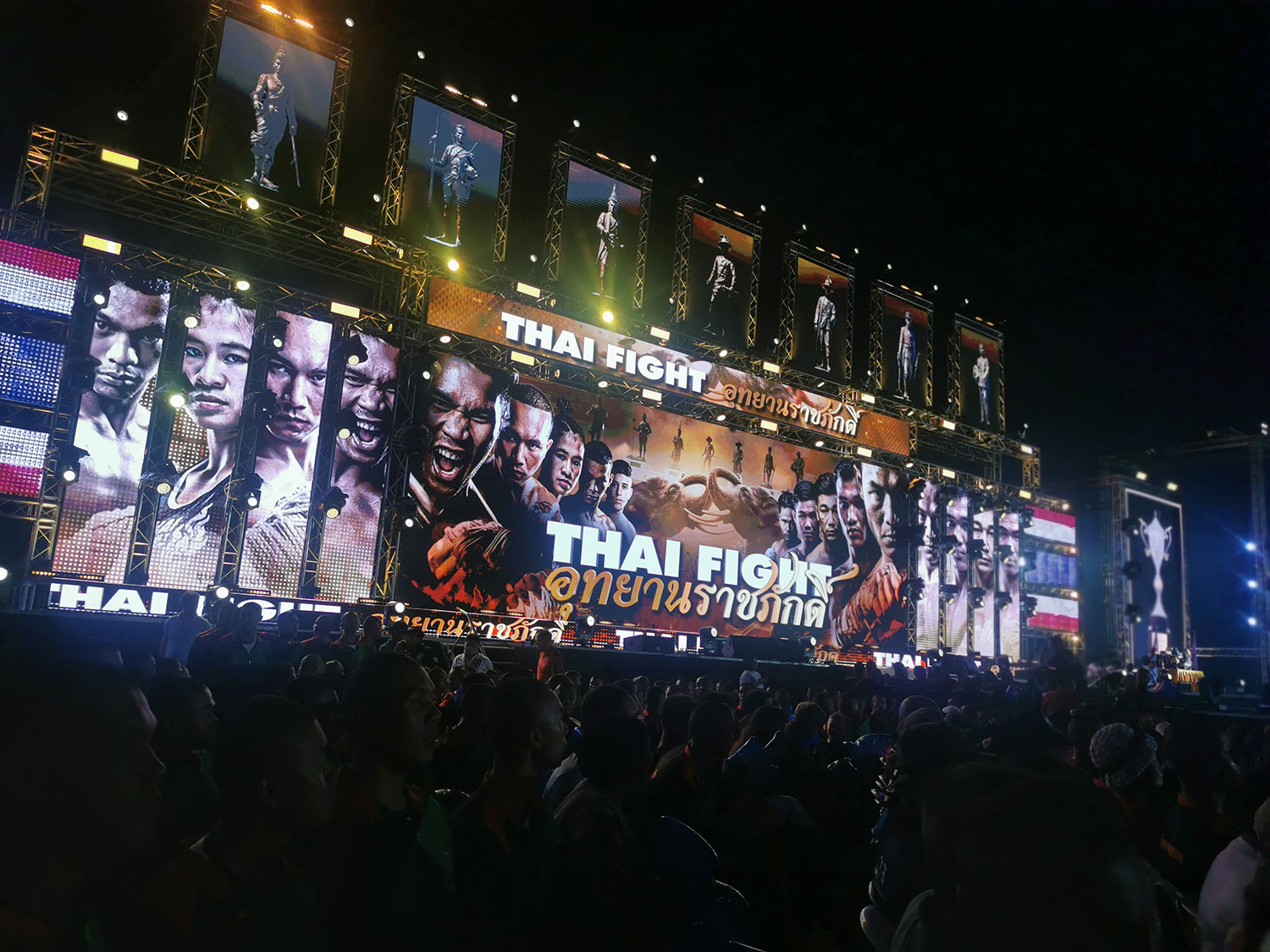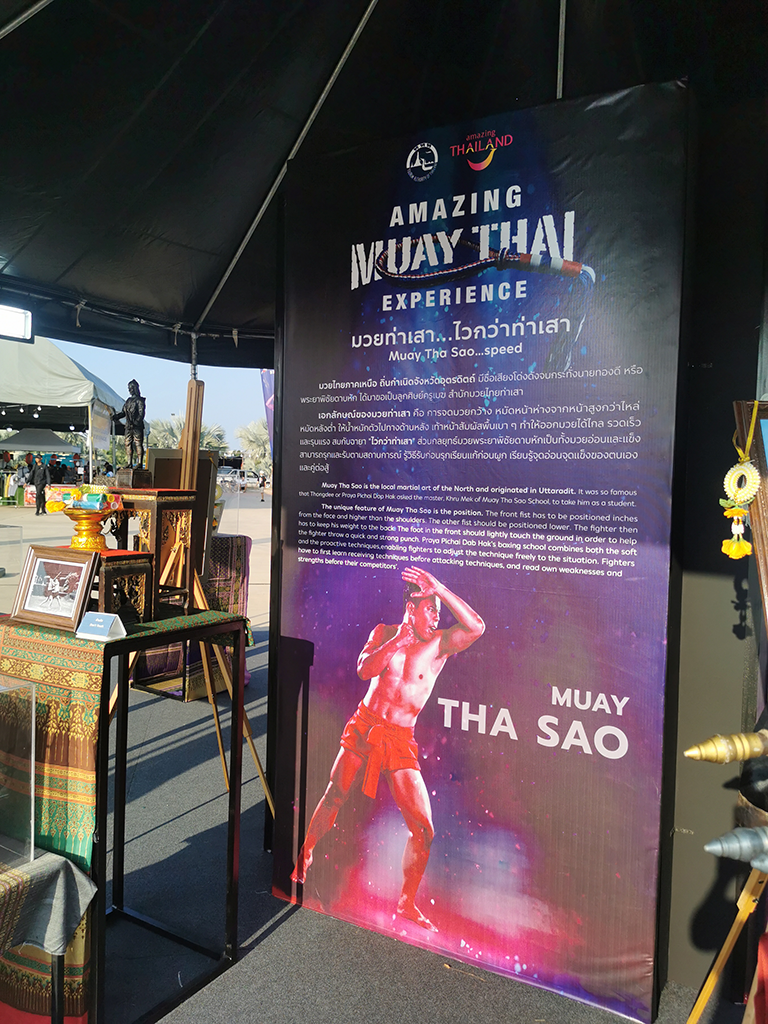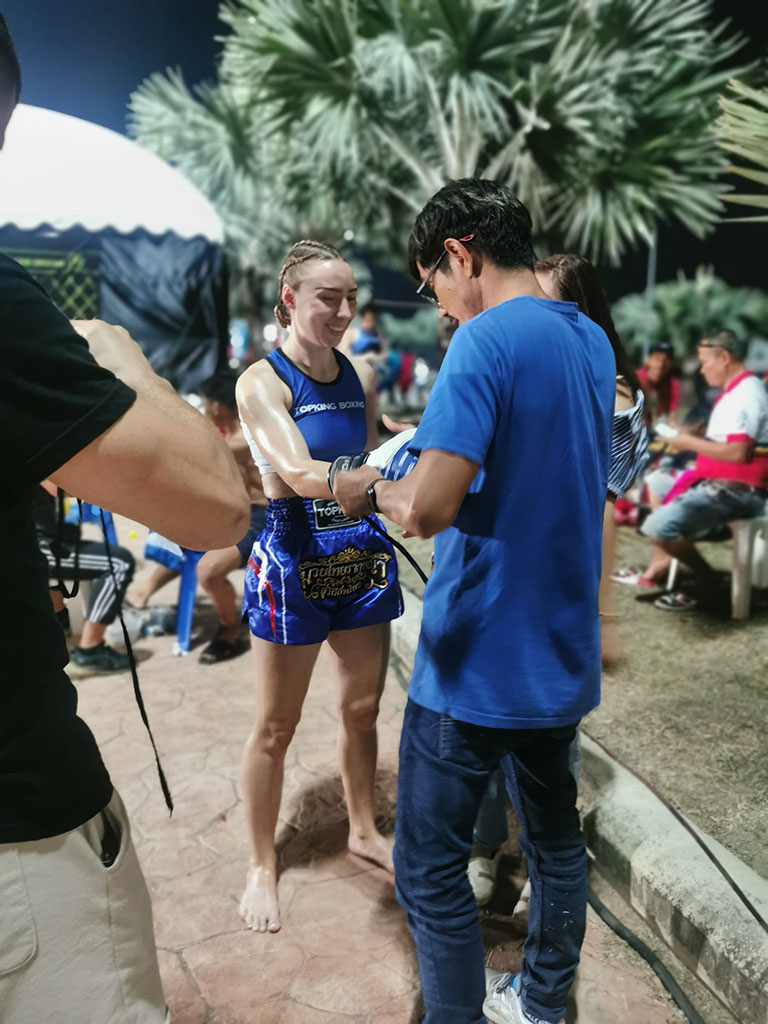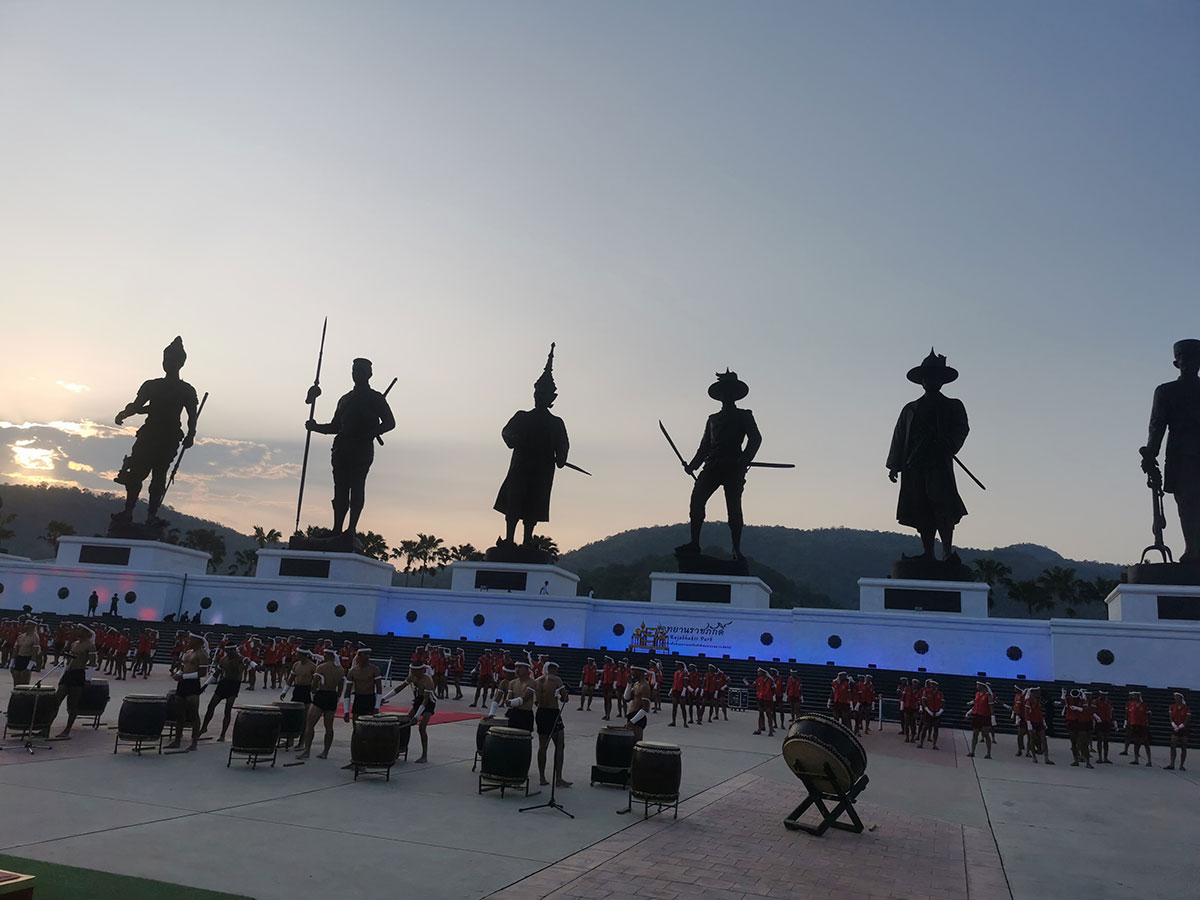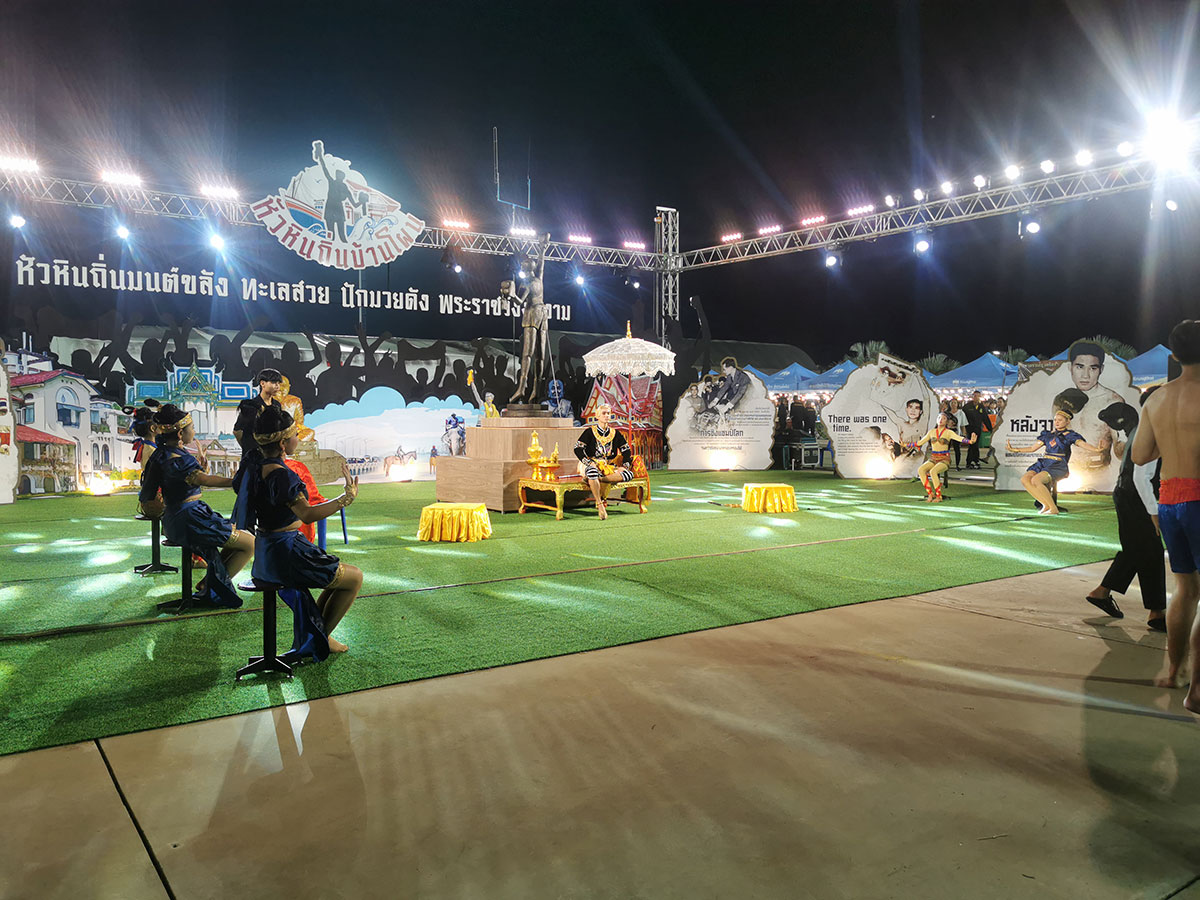A Day to remember!
Hua Hin Rajabhakti Park Muay Thai Festival
Among all the memorable days, this one stands out as unforgettable. Not far from our apartment in Hua Hin, Thailand, lies a unique and historically significant place that’s worth a visit- known as Rajabhaki Park. This park, themed around honoring past Thai kings since the Sukhothai period, was constructed by the Royal Thai Army on its property. It was brought to life with around one billion baht (approximately US$28 million) in funds contributed by both public and private sectors. Dominating the landscape of the park are the statues of seven eminent Thai kings, each sculpted in bronze and standing tall at an average height of 13.9 meters. In February of this year, we had the incredible opportunity to engage ourselves in an amazing Muay Thai festival held at the park over three days.
This event was strategically designed to boost sports tourism through the promotion of Muay Thai, aiming to elevate its global recognition and position Thailand as the premier destination for this martial art.
The festival featured activities showcasing the rich heritage of Muay Thai, including:
The “THAI FIGHT” Muay Thai competition, offering attendees the thrill of witnessing high-caliber bouts.
The Wai Kru ceremony, a traditional ritual where fighters pay respect to their trainers, showcasing the deep cultural roots and respect implanted in Muay Thai.
A veneration ceremony dedicated to honoring past Thai kings, specifically King Sanphet VIII. Revered as the father of Muay Thai, King Sanphet VIII significantly promoted the martial art during his rule in the Ayutthaya Kingdom in the early 18th century, highlighting the historical importance of Muay Thai in Thai culture.
Muay Thai, also known internationally as Thai boxing, stands out as a distinctive form of martial art from Thailand. It is celebrated for its elegance and fluidity, combining the use of hands, elbows, knees, and shins in a dance of martial prowess that is both beautiful and formidable.
History of Muay Thai
Muay Thai, often referred to as Thai boxing, is a martial art and combat sport that originated in Thailand hundreds of years ago, around the 18th century. It is known as “the art of eight limbs” because it allows fighters to use fists, elbows, knees, and shins for striking, making it a very dynamic and comprehensive fighting style. Muay Thai was developed by warriors for self-defense during times of war, and it has evolved over time into a popular sport. In addition to being a competitive sport, Muay Thai is also an important part of Thai culture and tradition, with fighters performing a ceremonial dance called the Wai Kru before each match to show respect to their teachers and ancestors. Today, Muay Thai is practiced worldwide, both as a form of physical fitness and as a professional sport.
1. Day First of Amazing Muay Thai Festival
Upon our arrival at the venue on the first day, we were immediately struck by the vibrant display of stands and booths. The festival greeted us with an extensive collection of activities that beautifully showcased Thailand’s cultural and martial heritage. Among these were live demonstrations of Thai martial arts, a celebration of the country’s rich cultural traditions including culinary delights, and exhibitions of Muay Thai techniques from various regions of Thailand. Additionally, there were workshops focused on crafting traditional Muay Thai headbands and an informative exhibition that traced the long history of this valued sport.
Before the highlight of the evening—a Muay Thai fight featuring top-tier athletes, including the renowned Saenchai Sor. Kingstar in the climactic final—there was an abundance of sights to take in. The event’s organization was impeccable; staff members ensured we were comfortably seated, and as more spectators gathered, the anticipation built. The setup for the stage and entrance was nothing short of spectacular, complete with a large screen ensuring that every attendee could clearly witness the bouts. Each fighter was introduced with due ceremony, and all paid homage to a prominent portrait of the current Thai King, Rama X, symbolizing respect and tradition. The atmosphere was electrifying, with lively music setting the tone, prompting many to dance and revel in the joyous occasion.
2. Day Two of Amazing Muay Thai Festival
On our second day, even more incredible attractions awaited us. This day was entirely dedicated to a Muay Thai Boxing competition, featuring an astonishing performance that highlighted traditional Muay Thai stances. Over 5,000 Muay Thai practitioners participated, each showcasing their skill and dedication to this martial art.
As the evening set in, the arena turned magical. The lights dimmed, giving way to a mesmerizing drone show. These drones illuminated the sky, forming letters and images above us. This breathtaking display not only demonstrated the artistry of the Muay Thai Wai Kru—a ceremonial dance expressing respect—but also showcased advanced technology through the coordination of over 700 drones. The event culminated in a spectacular fireworks display, marking a memorable end to a day filled with tradition, technology, and reverence.
Furthermore, the evening showcased a series of competitions on a nearby stage, highlighting exceptional athletes from gyms throughout Hua Hin and beyond. Among them was Jovan from Sweden, who clinched victory in the second round, demonstrating his remarkable skills. These fights showcased the strength, agility, and spirit of the competitors, drawing a crowd eager to witness the bouts. The athletes, representing the peak of Muay Thai from various gyms, engaged in bouts that were not only about physical power but also about honoring the traditions and discipline of this sport.
3. Day 3 of Amazing Muay Thai Festival
The festival’s final day was packed with more excitement. Just like the day before, there were more fights, another stunning drone show, and plenty of performances that explored the history of Muay Thai. The food stands offered a variety of tastes, and I had the chance to try a coconut rice pancake known as Khanom Babin for the first time. It was delicious—crispy on the outside, yet sweet and gooey inside.
Later, we joined the queue to watch more fights, excited to see a member of the Sitjaopho team (an amazing gym you can read more about in a separate post) in action that night. Iza from Sweden competed in a challenging five-round fight and got the win. Her performance was extraordinary, showcasing not only strength but also impressive technique and a huge heart. Watching her fight was truly special, a highlight that showcased the skill and spirit of Muay Thai.
Additionally, the festival concluded with a grand closing ceremony. The Prime Minister led the event, which included a tribute to the seven kings and King Rama VIII. There were also demonstrations of Muay Thai weapons and heartfelt tributes to Muay Thai instructors, adding a ceremonial end to the festivities.
The Prime Minister, in his speech, highlighted Muay Thai’s rich legacy in Thailand, a tradition that spans over three centuries. He emphasized how the event has put Muay Thai on the global stage. He noted Thailand’s status as a revered destination for fighters worldwide, coming to honor the masters of Muay Thai, marking a step in elevating Muay Thai to a globally recognized heritage.
